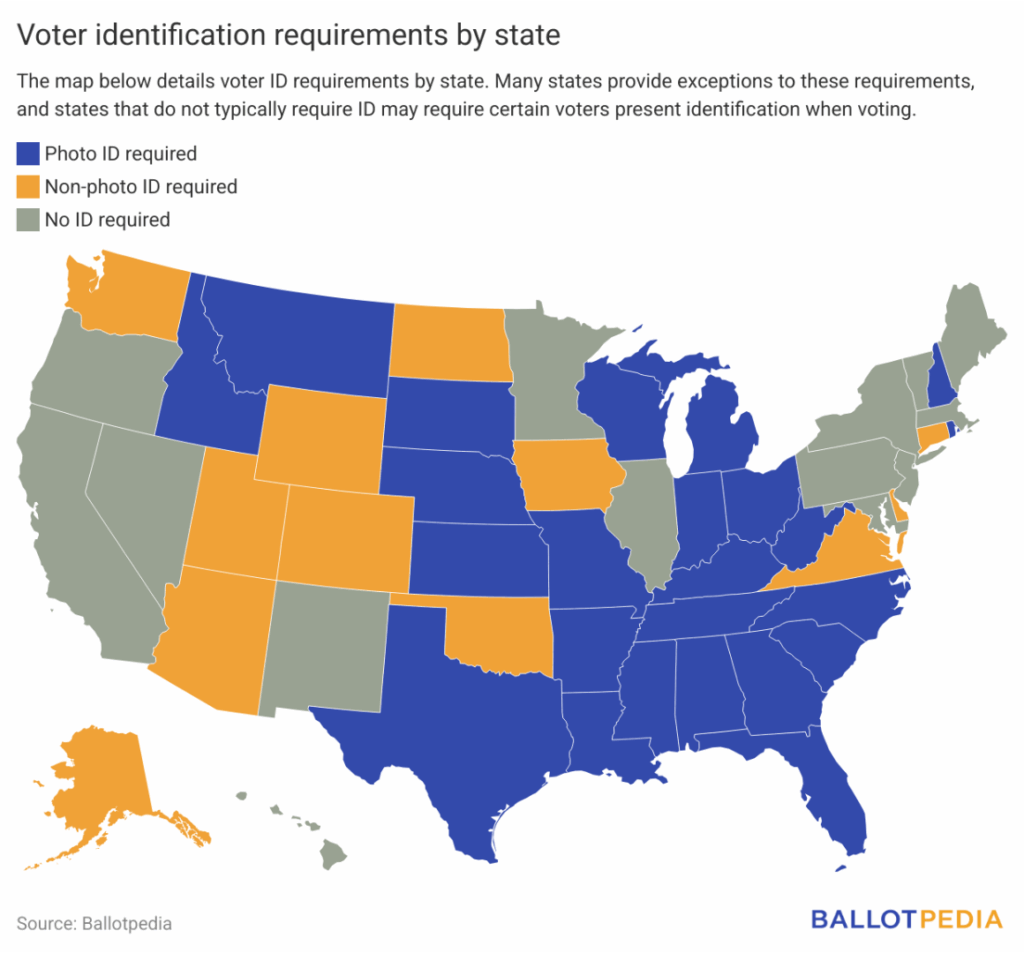Ballotpedia's Top 10 elections to watch this Nov. 4
With less than three weeks to go until Election Night, our staff is busy preparing to cover more than 10,000 elections across the country. Out of all those races, our team has selected 10 of the most important, compelling, and competitive elections to watch.
We selected these elections based on past results, unique circumstances, and forecasters’ ratings, ensuring a mix of congressional, state, and local races.
We provide a brief summary of each race, along with a link to our more comprehensive coverage. Access the top elections to watch at the link below.
Ten states have amended their voter ID laws so far this year — here’s what each state currently requires
As November nears and voters head to the polls in 36 states, let’s review which states require voters to present identification when casting their ballots — and see where voter ID laws have changed in 2025.
Across the U.S., 36 states require voters to present identification to vote at the polls on Election Day. Of those states, 24 require voters to present photo identification, while the other 12 states accept identification that does not contain a photograph. The remaining 14 states do not require voters to present identification to vote at the polls on Election Day, in most cases.
Ten states have amended their voter ID laws so far in 2025. One state, West Virginia, moved from requiring non-photo identification to vote to requiring photo identification.

California Proposition 50 ranks as the seventh most expensive ballot measure in state history, with $139.9 million raised
California Proposition 50 ranks as the seventh most expensive ballot measure in the state’s history, based on total contributions to campaigns supporting and opposing the amendment. As of Oct. 13, campaigns raised $139.9 million for and against Proposition 50. Supporters received $97.7 million, while opponents received $42.2 million.
Proposition 50, which voters will decide on Nov. 4, would allow the state to use a new, legislature-drawn congressional district map for 2026 through 2030. The proposed map would replace the existing maps, which the 14-member Citizens Redistricting Commission adopted in December 2021. Under Proposition 50, five Republican-held districts would shift to become more Democratic, based on the 2024 presidential election results.
This year's recall success rate is 10%—below the 15-year average
As of Oct. 10, voters have removed 32 of the 306 elected officials named in recall efforts this year. That's a success rate of 10%. From 2010 to 2024, the average recall success rate was 17%.
The highest success rate occurred in 2011, when voters removed 83 of the 308 officials targeted for recall from office, a success rate of 27%.
The lowest success rate occurred in 2021, when voters removed 25 of the 545 officials targeted for recall, a success rate of 5%.

